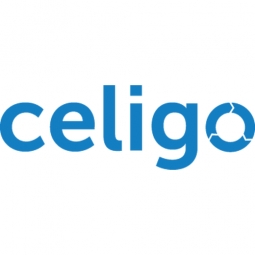下载PDF
Lightbend Streamlines Operations with Celigo's Salesforce-NetSuite Integration
技术
- 应用基础设施与中间件 - 数据交换与集成
- 应用基础设施与中间件 - 中间件、SDK 和库
适用行业
- 水泥
- 金融与保险
适用功能
- 采购
- 销售与市场营销
用例
- 租赁金融自动化
服务
- 系统集成
挑战
Lightbend 一直在稳步增长,这导致该公司的现有会计软件无法满足需求。该公司的计费和收入确认流程非常手动,导致效率低下和错误。该公司希望将其 CRM Salesforce 与其会计系统 NetSuite 集成。然而,由于工作的手动性质,Salesforce和会计系统之间的数据同步很容易出错。该公司预计会有更多的销量增长,但很难跟踪其销售和账单信息,从而导致错失机遇和挑战。
关于客户
Lightbend 是一家位于加利福尼亚州旧金山的计算机软件公司。该公司由 Martin Odersky、Jonas Bonér 和 Paul Phillips 于 2010 年创立,专注于提供可扩展、高性能的微服务框架和流引擎,用于构建针对云原生基础设施优化的以数据为中心的系统。 Lightbend 与 IBM、Red Hat 和 Accenture 建立了战略合作伙伴关系,其客户包括财富 100 强公司中的 27 家。该公司使用Salesforce作为其CRM,并使用NetSuite作为其基本会计系统。
解决方案
Lightbend 在收到其他有相关经验的人的积极反馈后,选择了 Celigo 作为其集成解决方案。 Celigo 在 Salesforce 和 NetSuite 之间启用了完整的工作流程,使 Lightbend 能够轻松地将 NetSuite 中的订单与 Salesforce 中已完成的订单进行核对。该公司使用 Celigo 将销售订单导出到 NetSuite,然后进行处理。来自 NetSuite 的基本信息(如果与订单有关或是否已关闭)会被推送回 Salesforce。合同续订在 NetSuite 中设置,续订报价被推送回 Salesforce。这种集成提供了实时数据同步,确保 Lightbend 的财务和销售团队都拥有最新且准确的信息。
运营影响
相关案例.

Case Study
System 800xA at Indian Cement Plants
Chettinad Cement recognized that further efficiencies could be achieved in its cement manufacturing process. It looked to investing in comprehensive operational and control technologies to manage and derive productivity and energy efficiency gains from the assets on Line 2, their second plant in India.

Case Study
Real-time In-vehicle Monitoring
The telematic solution provides this vital premium-adjusting information. The solution also helps detect and deter vehicle or trailer theft – as soon as a theft occurs, monitoring personnel can alert the appropriate authorities, providing an exact location.“With more and more insurance companies and major fleet operators interested in monitoring driver behaviour on the grounds of road safety, efficient logistics and costs, the market for this type of device and associated e-business services is growing rapidly within Italy and the rest of Europe,” says Franco.“The insurance companies are especially interested in the pay-per-use and pay-as-you-drive applications while other organisations employ the technology for road user charging.”“One million vehicles in Italy currently carry such devices and forecasts indicate that the European market will increase tenfold by 2014.However, for our technology to work effectively, we needed a highly reliable wireless data network to carry the information between the vehicles and monitoring stations.”

Case Study
Safety First with Folksam
The competitiveness of the car insurance market is driving UBI growth as a means for insurance companies to differentiate their customer propositions as well as improving operational efficiency. An insurance model - usage-based insurance ("UBI") - offers possibilities for insurers to do more efficient market segmentation and accurate risk assessment and pricing. Insurers require an IoT solution for the purpose of data collection and performance analysis

Case Study
Smooth Transition to Energy Savings
The building was equipped with four end-of-life Trane water cooled chillers, located in the basement. Johnson Controls installed four York water cooled centrifugal chillers with unit mounted variable speed drives and a total installed cooling capacity of 6,8 MW. Each chiller has a capacity of 1,6 MW (variable to 1.9MW depending upon condenser water temperatures). Johnson Controls needed to design the equipment in such way that it would fit the dimensional constraints of the existing plant area and plant access route but also the specific performance requirements of the client. Morgan Stanley required the chiller plant to match the building load profile, turn down to match the low load requirement when needed and provide an improvement in the Energy Efficiency Ratio across the entire operating range. Other requirements were a reduction in the chiller noise level to improve the working environment in the plant room and a wide operating envelope coupled with intelligent controls to allow possible variation in both flow rate and temperature. The latter was needed to leverage increased capacity from a reduced number of machines during the different installation phases and allow future enhancement to a variable primary flow system.

Case Study
Automated Pallet Labeling Solution for SPR Packaging
SPR Packaging, an American supplier of packaging solutions, was in search of an automated pallet labeling solution that could meet their immediate and future needs. They aimed to equip their lines with automatic printer applicators, but also required a solution that could interface with their accounting software. The challenge was to find a system that could read a 2D code on pallets at the stretch wrapper, track the pallet, and flag any pallets with unread barcodes for inspection. The pallets could be single or double stacked, and the system needed to be able to differentiate between the two. SPR Packaging sought a system integrator with extensive experience in advanced printing and tracking solutions to provide a complete traceability system.






